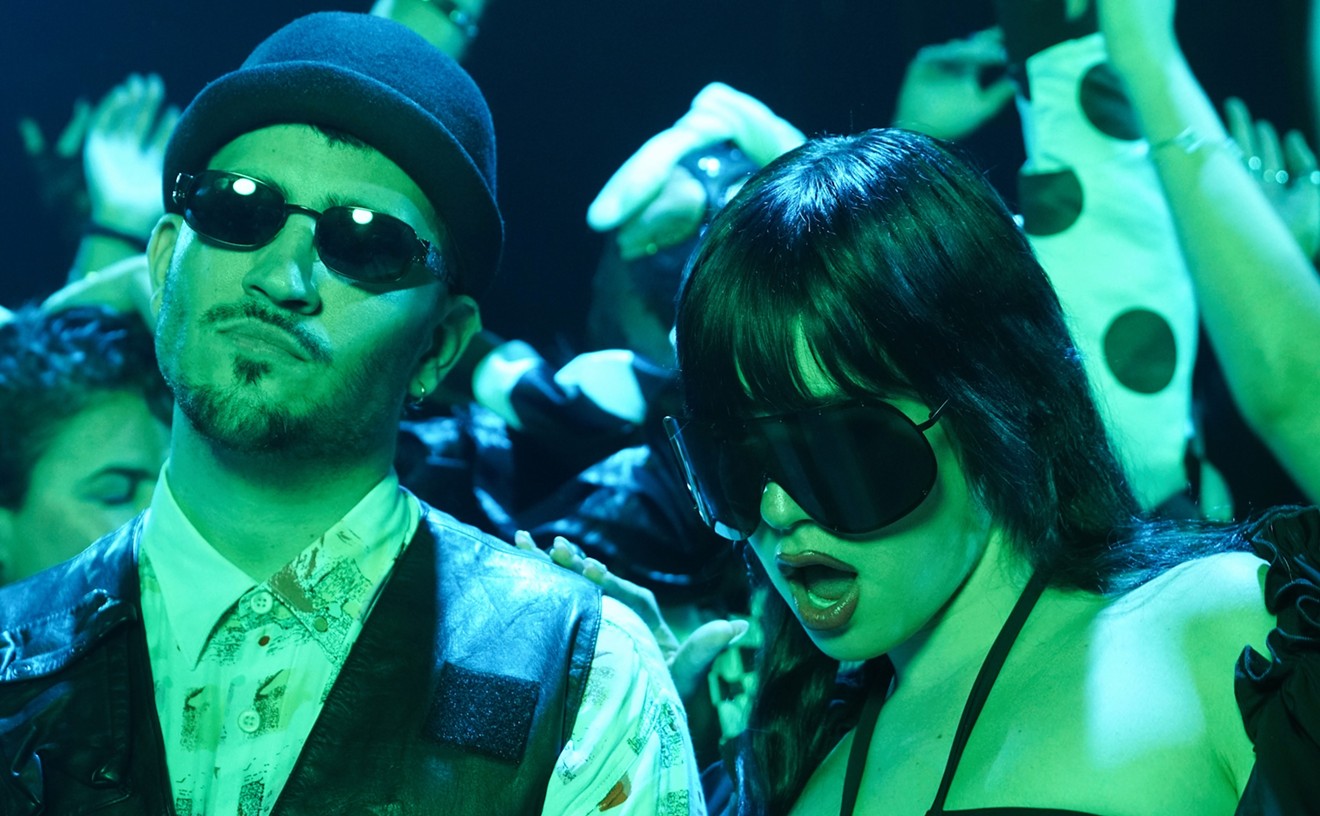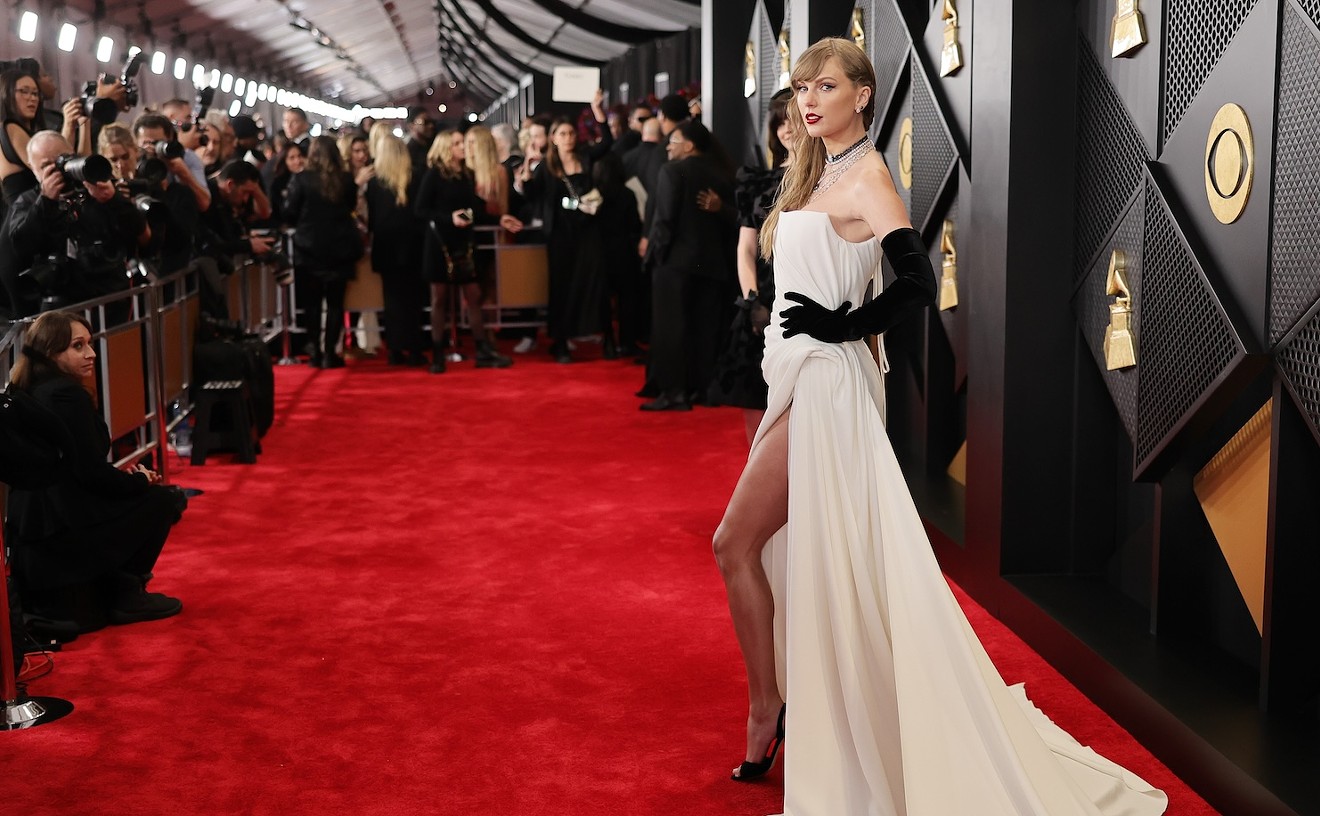The latest in a series of back-to-the-roots groups to emerge in the wake of the international success of the Buena Vista Social Club, Buenaventura features Bofill less as a sex machine than as a Caribbean postmodernist's repeating island. Four decades after the Cuban revolution and counting, today is not so much like yesterday as it is like the day before that or the day before that. Bofill's return heralds a new phenomenon: the nostalgia for nostalgia.
On a Friday in November, Buenaventura is offering its cool burn of traditional Cuban fare to a three-quarters-full crowd at the Havana Dreams Café in the Doral. Founded by Grupo Nostalgia percussionist Eduardo Rodriguez, the fledgling five-member ensemble got off the ground in mid-August, about the same time as the restaurant. Bofill joined this band because, he explains, "I needed to go my own way; I was suffocating at Café Nostalgia." (Horta counters that the singer was dismissed for consistently arriving late to work). Whatever the reason, Bofill chose a name for this new band that means "fare well," both in the sense of goodbye and good journey.
Since shortly after the restaurant's opening, Buenaventura has been playing the café's 5:00 to 7:00 p.m. happy hour, as well as performing for parties hosted by the eatery. The mallish environs of Doral Plaza make for a sterile and unlikely spot to launch something as exquisite as a traditional son band, but Miami, after all, is a city of improvisations. Even in a suburban shopping center, with the lights dimmed and the wooden floor waxed to a shine, Buenaventura summons the shards of days gone by.
Set up at the top-edge of the T-shape room, the band runs through classic and contemporary compositions. You have to want to dance in order to get a good look at the group, because about five notes into a set, couples quickly pile on to the dance floor, obscuring your view. Bofill, dressed in black T-shirt and leather jeans, scratches away at the large guiro in his hands, his bald head glistening with perspiration. He spins to his left and to his right, making eye contact with the band members. To the right rear of Bofill, former Albita and now Grupo Nostalgia bassist Mandy Gonzalez is all dark fingers and bent wrists as he works at his upright. To the far right, guitarist Heriberto Rey looks to Bofill for cues from beneath the bill of his tan hat. Band founder and bongo player Rodriguez sits to the sonero's back left. Wearing a denim shirt and pants, he taps away, his three-inch goatee hanging stiffly in the air below his chin. To Rodriguez's back left sits Eddie "El Gordo" Conga, playing, no surprise, conga drums. He too is in all black. To his left, waiting his turn to weave some filigree into the sonic fabric, stands Petaca, the mercurial Grupo Nostalgia saxophonist. His eyes, for the moment, lack the penetrating, sometimes searching, intensity typical of his off-stage persona. Beneath the spotlight he casually awaits his entrance with the air of a practiced fugitive.
A close listen to the group's execution reveals as much new here as there is old. Buenaventura retains the feel and the acoustic integrity of traditional Cuban son and bolero bands of the 1930s, sans the nine-stringed tres. Petaca's saxophone work, however, hardly can be considered a diminishment from the traditionally brass-led efforts of groups such as the Septeto Nacional and the Sexteto Habanero. If anything the woodwind solos seem to peel back a deeper veil in the music, toward something otherworldly. Petaca's reed-soaked riffing harks back to a time when Cuban music was strictly about religion, even as it gives a modern jazzy undercurrent to this Miami improvisation now clothed in the voicings of 1930s Havana.
On a two-song demo recording by the quintet, there's a rendition of Sergio Seaba's "El Cuarto de Tula" ("Tula's Room"). The Buena Vista Social Club, you may remember, resuscitated this classic guaracha about a woman's room catching fire as she sleeps. Buenaventura's version lacks some of the gravity of the elder group's work, thereby losing some of the complex strains -- both dark and comic -- dueling within the song. The group's more youthful take on the 1940 Aparicio/Sanchez classic, "Un Cubano en Nueva York" ("A Cuban in New York"), captures the naiveté of immigrants. The song takes a lighthearted tack on the grim subject of a young Cuban male in search of love in the Big Apple who finds himself courting a prostitute. Sixty years later Buenaventura's rendition finds equal resonance for innocent arrivals caught in the hustle and bustle of Miami. "Te lo dije; Te lo dije," Bofill admonishes as the tune gets under way, speaking to newer immigrants as the voice of experience. "I told you so; I told you so."
While Buenaventura showcases these classics, the group also draws from much more modern pieces, which it situates within the airtight, remarkably sufficient traditional context. "Babalu Aye," for example, is a 1980s number penned by controversial island songwriter Pedro Luis Ferrer, a personal friend of Bofill. "I like to play one of his songs whenever I get an opportunity," says the vocalist. Ironically this contemporary song summons the most ancient traditions, an homage to the Yoruba god and patron saint of the infirm. In button-down shirts and jeans, modern-day dancers reached for handkerchiefs at Friday night's performance, shooing away evil spirits. Using old sounds to propel original compositions is the ultimate goal of Buenaventura. This nostalgia for nostalgia points toward the future. "Where are we going?" asks Rodriguez. "We'll see what happens as we move down the road."










